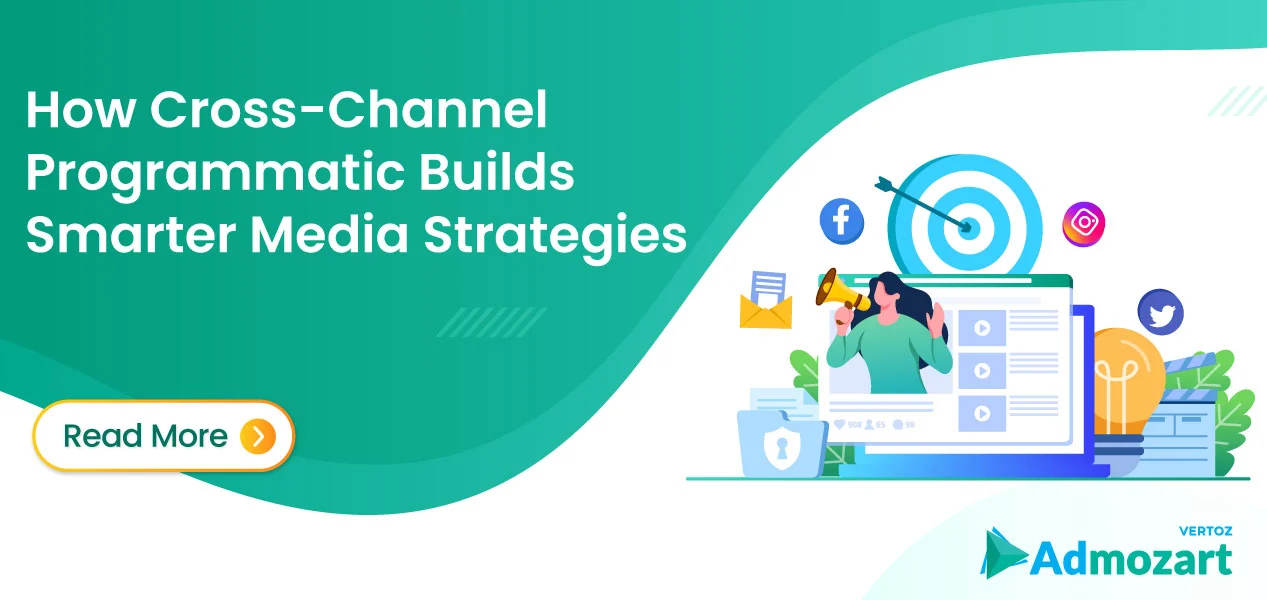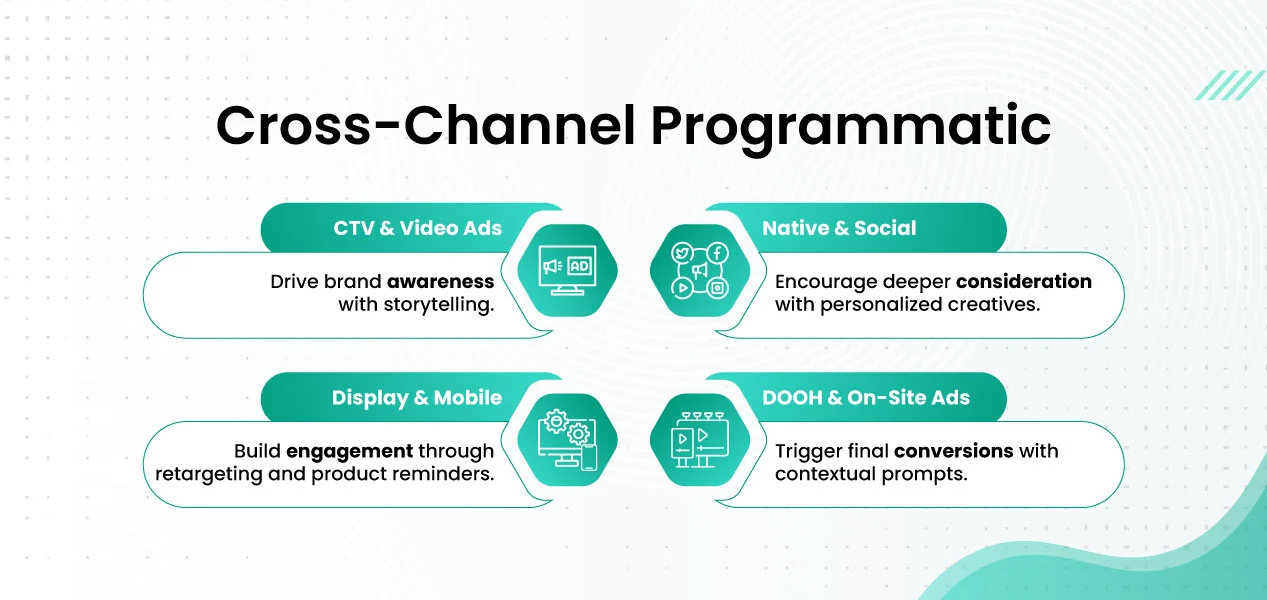
Consumers no longer engage with brands in a linear fashion. Someone could see a Connected TV (CTV) ad while cooking dinner, scroll through a product review on their phone, come across a banner ad at work, and then spot that same brand on a Digital Out-of-Home (DOOH) screen near their gym.
For advertisers, this combination of screens and moments emphasizes the importance of consistency across all platforms. That’s where cross-channel programmatic changes the game. It ties all those touchpoints together so your message feels like one continuous conversation instead of scattered reminders. At Admozart, this approach isn’t just a technical upgrade. It’s a smarter way to think about media, one built around data, creativity, and context working in sync rather than in isolation.
Moving Beyond Channel Silos
It wasn’t long ago that digital teams worked like separate islands. One handled the display, another ran video, and someone else managed mobile or CTV. Each team hit its own numbers, but the overall story often got lost. That setup led to three predictable issues: wasted impressions, inconsistent messaging, and a constant question about which ad actually drove a conversion.
Unified programmatic advertising flips that logic. It doesn’t treat channels as competitors; it treats them as collaborators. A video ad on CTV can introduce the brand, a mobile ad can remind the same user later in the day, and a display banner can nudge them to act, all within one ecosystem.
When every screen plays a coordinated role, audiences don’t feel bombarded; they feel guided. That’s the real strength of cross-platform media planning; it brings rhythm and relevance to a landscape that used to be disjointed.
The Power of Shared Data
Once everything runs through a single programmatic infrastructure, something intriguing happens: insights stop sitting in separate dashboards. They start to inform each other. If a CTV ad performs exceptionally well with a certain demographic, that data instantly sharpens how your mobile or display campaign targets the same audience. If frequency spikes on one channel, centralized analytics pull it back before ad fatigue sets in.
And because the data connects across all screens, cross-channel attribution becomes much clearer. You can finally trace how awareness built on one platform leads to a conversion on another. It’s not just more information; it’s smarter information, the kind that makes optimization feel less like guesswork and more like precision.
When AI Does the Heavy Lifting
Managing real-time bidding, placements, and creative shifts across five or six media channels would overwhelm any team. That’s why AI and machine learning (ML) have become such integral partners in modern programmatic systems.
In Admozart’s environment, AI quietly watches every signal: video completion rates, scroll behavior, engagement depth, and even time of day performance. From there, it reallocates budgets dynamically, pushing spending toward what’s working best and trimming what’s not, a process known as dynamic budget allocation.
This constant real-time optimization keeps campaigns agile. Instead of waiting for end-of-month reports to adjust, the system learns and adapts as it goes. The result? This results in reduced waste, increased impact, and a campaign that responds to actual human behavior rather than outdated data.
And while AI takes care of the mechanics, marketers stay focused on the creative direction where technology ends and storytelling begins.
Creative That Feels Consistent Everywhere
Different screens demand different creative treatments, but the brand story shouldn’t feel like it’s changing personalities. That’s where Dynamic Creative Optimization (DCO) does its quiet magic.
Through DCO, a campaign adapts to each format without losing its tone or intent. A streaming ad might show the full story, while a mobile banner carries the follow-up offer. The campaign maintains the same message but adopts a different rhythm.
This level of creative consistency helps brands maintain recognition without monotony. The design, language, and call to action evolve naturally across formats so that wherever a person sees the ad, it feels like the same conversation continued, not restarted. In practice, that’s what people remember: not that they saw multiple ads, but that each one made sense in the moment they encountered it.

Admozart’s Role in a Unified Media World
Pulling all of this together takes a strong foundation, one that connects strategy, data, and delivery. That’s what Admozart’s programmatic infrastructure is built for.
- All Screens, One System: Display, mobile, video, CTV, and DOOH live in one connected ecosystem.
- Centralized Analytics: Every performance metric aligns under a single, real-time view.
- AI-Guided Optimization: Campaigns evolve as they run, ensuring your media strategy gets sharper with every impression.
It’s not about flooding every channel; it’s about finding the right balance between reach and relevance and letting data quietly power both.
Conclusion
Cross-channel programmatic isn’t the next buzzword; it’s the new baseline. It’s how brands stay recognizable without being repetitive and how advertisers bring logic to the chaos of modern media. When your data, creative, and automation work together, your message stops competing for attention and starts earning it. At Admozart, this philosophy shapes everything we build: smarter tools for smarter media strategies that move as fluidly as the people they’re meant to reach.
Comments are closed